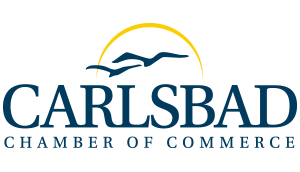By Justin Peek, CFP, AAMS Financial Advisor Edward Jones
Congress has dedicated the third week of October as National Save for Retirement Week. Clearly, the government feels the need to urge people to do a better job of preparing for retirement. Are you doing all you can?
Many of your peers aren’t – or at least they think they aren’t. In a recent survey conducted by Bankrate.com, respondents reported that “not saving for retirement early enough” was their biggest financial regret. Other evidence seems to show they have good cause for remorse: 52% of households 55 and older haven’t saved anything for retirement, according to a report from the U.S. Government Accountability Office, although half of this group reported having a pension.
Obviously, you’ll want to avoid having either financial regrets or major shortfalls in your retirement savings. And that means you may need to consider making moves such as these:
Take advantage of all your opportunities. You may have access to more than one tax-advantaged retirement plan. Your employer may offer a 401(k) or similar plan, and even if you participate in your employer’s plan, you are probably still eligible to contribute to an IRA. You may not be able to afford to “max out” on both plans, but try to contribute as much as you can afford. At the very least, put in enough to your employer’s plan to earn a matching contribution, if one is offered, and boost your annual contributions every year in which your salary goes up.
Create an appropriate investment mix. It’s not enough just to invest regularly through your IRA, 401(k) or other retirement plans – you also need to invest wisely. You can fund your IRA with virtually any investments you choose, while your 401(k) or similar plan likely offers an array of investment accounts. So, between your IRA and 401(k), you can create portfolios that reflect your goals, risk tolerance and time horizon. It’s especially important that your investment mix offers sufficient growth potential to help you make progress toward the retirement lifestyle you’ve envisioned.
Document a thorough accumulation and distribution retirement strategy. Do you know when most fatalities occur on Everest? Of the more than 280 climber deaths, the vast majority died on the descent. Summiting is the least of the concerns of the professional climber. Consequently, if you believe that throwing money into buckets and hoping you have ‘enough’ at retirement is the victory, you’re focused on the wrong objective. With the number of certified financial professionals available to you via the Carlsbad Chamber, as well as the availability online of retirement tools for the “do-it-myself” reader, there’s absolutely no excuse for not having a well-thought out accumulation and distribution strategy that is regularly updated. We’re now eight years since the last Bear Market and you will probably want this done before the next one!
Don’t “raid” your retirement accounts early. If you start withdrawing from your traditional IRA before you turn 59½, you may have to pay a 10% tax penalty in addition to normal income taxes due. (If you have a Roth IRA and start taking withdrawals before you are 59½, the earnings will be taxed and may be subject to a 10% penalty – but contributions can be withdrawn without any tax and penalty consequences.) As for your 401(k) or similar plan, you may be able to take out a loan, but you’ll have to pay yourself back to avoid any tax or penalty consequences. (Also, not all plans offer a loan option.) More importantly, any money you take out early is money that no longer has a chance to grow to help you meet your goals. Try to do everything you can, then, to keep your retirement plans intact until you actually do retire. One suggestion: Build an emergency fund containing three to six months’ worth of living expenses, kept in a liquid, low-risk vehicle outside your IRA or 401(k).
National Save for Retirement Week reminds us that we all must act to help ourselves retire comfortably. By making the moves described above, you can do your part. Contact a local Financial Advisor and request a no-cost, no-obligation initial meeting to verify how you’re tracking up the mountain and how you think you’re going to get down. Make this a priority in October.
Peek can be reached at [email protected].
